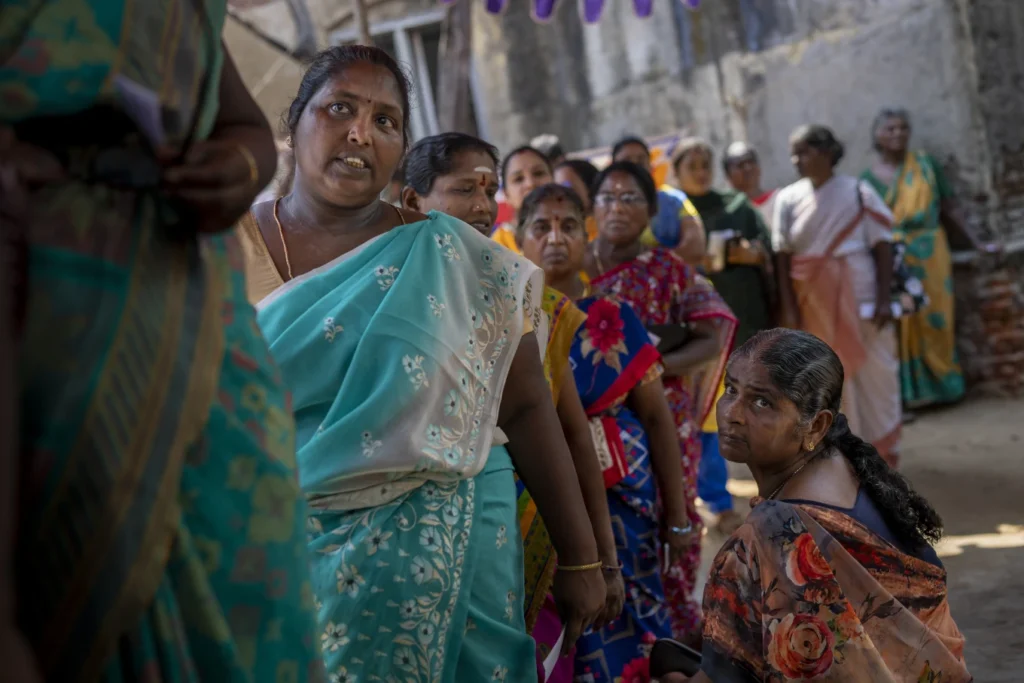Millions of Indians began voting Friday in a six-week election.
Hours before the official start time of 7 a.m., people started lining up at polling stations across the first 21 states where votes were being held, spanning from the Himalayan mountains to the tropical Andaman Islands.

Nearly 970 million voters, which accounts for over 10% of the world’s population, will participate in these staggered elections to elect 543 members to the lower house of Parliament for a five-year term. The voting process will continue until June 1, with the votes set to be counted on June 4.
The election in India is regarded as one of the most pivotal in the nation’s history, serving as a significant test of Prime Minister Modi’s enduring political influence.
To manage this immense electoral process, a vast infrastructure has been established, including 1.5 million polling booths and five million electronic voting machines deployed nationwide.
In terms of gender distribution, the voter demographic is fairly balanced, with male voters totaling 497 million, representing slightly over 51% of the total electorate, while female voters number 471 million, indicating a consistent rise in female voter participation over time.
Additionally, India sees significant participation from its youth, with 18 million first-time voters in the 18–19 age group and 197.4 million in the 20–29 age group.
India’s voter turnout is quite impressive when compared to that of many advanced democracies.
Should Modi secure victory, he would become only the second Indian leader to maintain power for a third consecutive term, following in the footsteps of Jawaharlal Nehru, the inaugural prime minister of the nation.
The majority of polls anticipate a triumph for Modi and his Hindu nationalist Bharatiya Janata Party (BJP), as they face off against a diverse opposition coalition spearheaded by the Indian National Congress along with influential regional parties.
However, during Modi’s two terms in office, there have been widespread criticisms of erosion in civil liberties across India, with the implementation of policies that many perceive as discriminatory. Peaceful protests have been met with heavy-handed force, and there have been concerns about the shrinking space for dissent. The vibrant and diverse press landscape has faced threats, leading to a chilling effect on freedom of expression.
Additionally, there has been a surge in violence targeting the Muslim minority, raising alarms about communal tensions. Moreover, government agencies have been accused of selectively targeting opposition politicians in corruption cases, raising concerns about the politicization of law enforcement.
“Modi has a very authoritarian mindset. He doesn’t believe in democracy. He doesn’t believe in Parliamentarianism,” said Christophe Jaffrelot, a political scientist who has written about Modi and the Hindu right.
Join our WhatsApp community via https://goquick.ly/cj8q2 for instant and latest news updates.